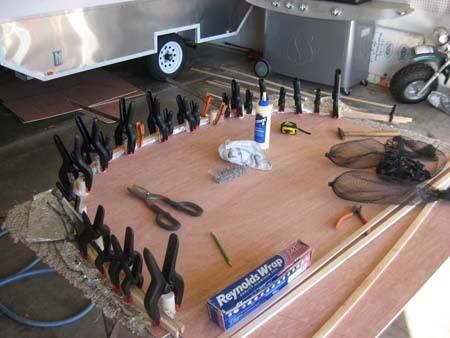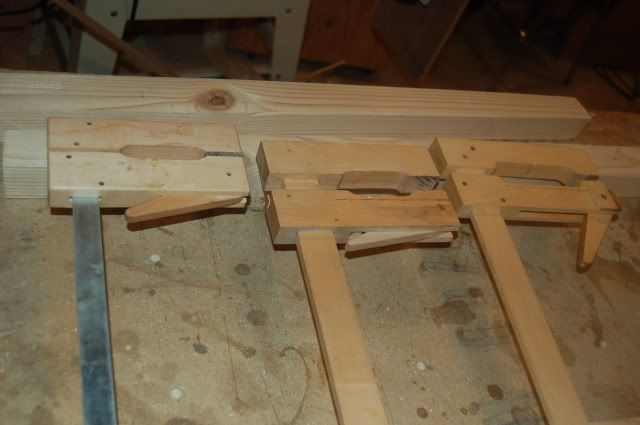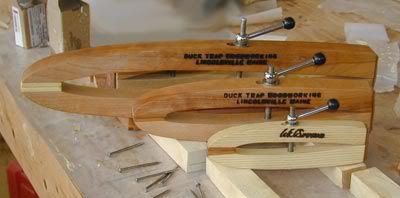how many of what type of clamp is enough
45 posts
• Page 3 of 3 • 1, 2, 3
anyway, you don't have to take my word for it. I couldn't care less but you can try it with no glue to see for yourself or..... you could go buy a bunch of clamp...
btw,, I got lots of clamps...
btw,, I got lots of clamps...
- afreegreek
- 500 Club
- Posts: 723
- Images: 0
- Joined: Mon Jan 25, 2010 8:35 pm
bve wrote:afreegreek wrote:how many clamps do you need to apply solid wood edges to plywood panels??
Interesting, so how much tension is on the tape? It doesn't look like much just a snug wrap. I've seen it used to hold laminate and other thin pieces in place but never something as thick as that. What kind of glue is being used and what is it's set up time?
the lime green 3M tape for auto body painting is the tape. it's tougher and stretchier than the white or the blue and it's got good stick as well. I put the tape over the top (face of the trim) and push down pretty (pushing the trim against the panel) hard on the sides a few inches or so from the top ( if you look close, you can see wher my thumb dug in and distorted the tape) then stick the tape to the side of the wood..
for this I'm using Tite-Bond II. you could take the tape off in an hour in a warm shop but it's better to leave it for a few hours before working it.
in all woodwork, it's the fit of the pieces. if they fit well they don't need a lot of pressure.
- afreegreek
- 500 Club
- Posts: 723
- Images: 0
- Joined: Mon Jan 25, 2010 8:35 pm





